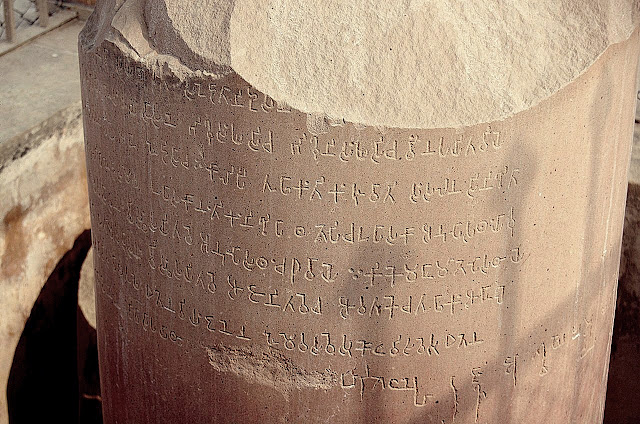The Wizard Theory
Do not meddle in the affairs of wizards, for they are subtle and quick to anger. —J. R. R. Tolkien
Every once in awhile I will write a post or series of posts on a certain subject, and it will spin off some kind of side theory or alternative theme because I think overly much. For example my post “Duende” a few months ago was inspired by my miniseries on atheism, and my “Two Tales of the God-Emperor” was partly a side effect of my series on Evola’s Pagan Imperialism, which features a deified God-Emperor with psychic powers. This post is another one of those. It is a side effect of my recent post discussing technologically advanced prehistoric civilizations. I have spontaneously developed a new hypothesis (or rather have reinvented an old one) to account for seemingly inexplicable huge stone monuments built thousands of years ago, which in my opinion is at least as good as, maybe even better than, the very idea that prehistoric humans developed civilizations more technologically advanced than our own is at present.
First I should describe the situation which has spawned the technologically advanced prehistoric civilizations hypothesis (TAPCH), and then point out again, briefly, why I am not inclined to accept it. Then I will propose my rival hypothesis.
There are many huge artificial structures, the great pyramids of Egypt being possibly the most well-known, which were built in ways that modern archeologists at present do not understand. For starters some of these structures were built during the late Stone Age or Copper Age, so that precision cutting of huge stone blocks would have been problematic without steel chisels or other modern-like tools and techniques. Then these very straightly cut stone blocks were put together so nicely that, as is so often pointed out, even a knife blade or a sheet of paper cannot be inserted between the stones. Furthermore these massive stone blocks may have been moved hundreds of miles, and sometimes up steep mountainsides, to get them to the building site. And on top of all that, some of these structures form the points of vast geometrical designs spanning thousands of miles (seemingly indicative of a widely spread civilization), and some of the structures are said to generate some mysterious form of energy (seemingly indicative of a technologically advanced civilization). Thus the conclusion to this mystery is presumed to be a technologically very advanced civilization that existed on this earth before it should have, going with modern archeological consensus. And thus there must have been a great, advanced civilization in the distant past which has disappeared except for these huge stone monuments and a few other stone objects. Furthermore, there has evidently, supposedly, been a huge conspiracy over hundreds of years and hundreds of nations to keep the existence of this past glorious age of humankind a secret.
My reason for rejecting the likelihood of any really advanced civilization in the Stone Age before or after the last glaciation, or in the Bronze Age, is that there have been no technologically advanced artifacts, or clear signs of artifacts, found associated with any of these monumental sites. No metal tools have been found that shouldn’t be there, for example. I won’t re-argue my case here, and anyone who is interested can scroll up or down a ways and find the article and my arguments there, but I will point out that the entire thesis of the TAPCH theorists is based on the idea, “we can’t figure out how they built these things with ancient technology so they must have used something like modern technology, or even better than modern technology.”
So this leaves the question of, if these ancients did not have any kind of advanced technology, then how did they build these huge structures out of massive, extremely heavy, precision-cut stone blocks, many of which were transported many miles, and which may generate mysterious energy fields? My answer to that question, my hypothesis, is this: Wizards did it. With magic.
This of course was a common theory back in pre-scientific ages for explaining huge monuments. Another similar theory was that giants and/or demigods constructed these structures using godlike powers. To this day there are pagodas in Burma that are commonly believed to be there due to the wondrous acts of wizards or adept alchemists. Kyaiktiyo, one of the most famous pagodas in Burma, which is built atop a large boulder mysteriously balanced on top of a natural stone pinnacle, is one of these.
But then modernism came along, and the so-called Enlightenment, and the people of the west began rejecting the very possibility of magic and the miraculous. They preferred a kind of atheistic materialism that has permeated what is essentially the foundation myth of western civilization, and, due to our worldly successes, indirectly the mythos of practically the entire civilized world. People of the modern west make an assumption that just about every person ever has made: cultures of the past, and other cultures even today, may be very wrong in their assumptions about the world, but not us. We have it all pretty much figured out and have proof, supposedly. Yet every culture has its own proofs of the validity of its own belief system (for example the belief in Roman Catholicism in medieval Europe was based on the miracles of saints and the universal acceptance of what was considered to be self-evidently true, but really wasn’t. Now we have scientists producing the proofs of their own theories and we denizens of the west consider our own beliefs, such as the objective existence of physical matter independent of our own mental states, to be self-evident, which they also are not.
Even so, most people in the west, the followers of the cultural mainstream, no longer believe in wizards, especially not ones who can levitate massive blocks of stone and construct huge temples and palaces with magical or psychic powers—though they readily consume movies and novels based on such ideas. So they fall back on the mythos of their society, that the immense powers and skills required to construct great monuments must be technological, materialistic, and essentially atheistic, devoid of the power of Spirit.
But as some thinkers like René Guénon have pointed out, and to some degree even Jesus of Nazareth, belief that there is no pervading Spirit, or that worldly materialism is the only truth, or that miracles can’t happen, is a kind of faith in and of itself, and a self-fulfilling prophecy. The devout belief that miracles can’t happen effectively prevents them from happening. We live in an extremely structured age (though that appears to be changing). But people of past ages had different beliefs and experiences, and it may be that a sufficient belief in the efficacy of magic caused more obvious magic to exist in this world. I am also reminded of some stories written by Larry Niven long ago in which magic or mana was a non-renewable resource in very ancient times, and that magicians wielded great power then, but eventually it was used up and became nothing more than the stuff of legends. Or maybe the laws of physics have changed somehow. At any rate, it could be that wizards built the pyramids.
I do not insist that this hypothesis is true. It’s just a hypothesis. But in my opinion it is at least as valid of an explanation as the Technologically Advanced Prehistoric Civilizations Hypothesis. For example it can explain the building of the structures just as nicely, if not more nicely, and it does not require the use of technological gadgets which ought to be there buried in the ground, but evidently are not. We get the same results without the need for artifacts which would be necessary for the TAPCH to be true, but which nobody has found.
Playing devil’s advocate against myself, thus muddying the waters and becoming tricksterish AF, I would observe that a common theory accounting for wizards, giants, and demigods in early folklore is the presence of great monuments of past ages which the degenerate people living in dark ages could not explain. For example there were great Mycenaean Greek palaces, monuments, and fortifications which seemed almost inexplicable to the Greeks after the Bronze Age Collapse, so they attributed them to demigods and divine magic. Medieval peasants in Europe held similar views regarding the monumental relics of the glory that was the Roman Empire. But this still does not rule out the possibility of wizards in the distant past, to the inhabitants of an overly structured age when people refuse to believe in miracles, psychic powers, and magic.
There are some who call me...Tim?








Hey, don't forget the faeries!
ReplyDelete